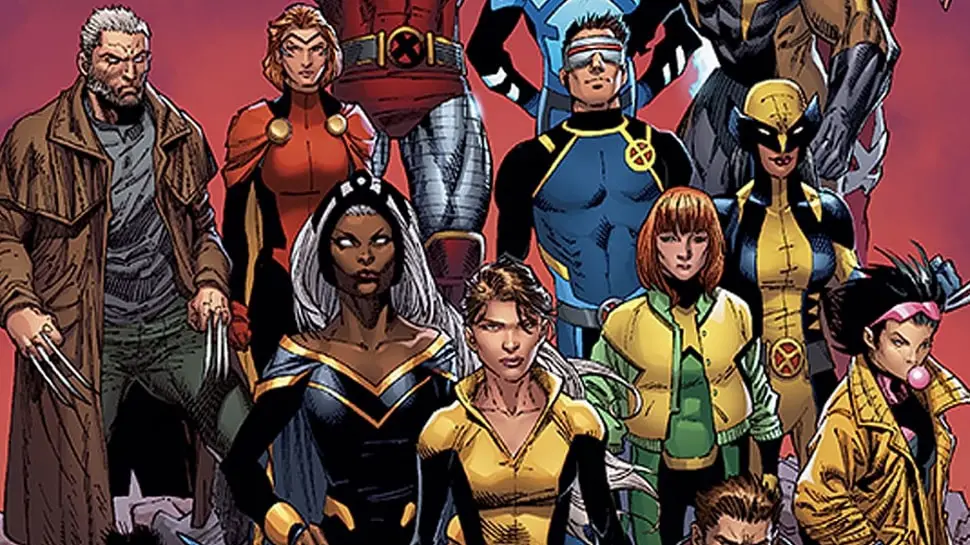Since their debut in 1963, the X-Men have sworn to protect a world that hates and fears them, but here at AiPT! we’ve got nothing but love for Marvel’s mighty mutants! To celebrate the long-awaited return of Uncanny X-Men, AiPT! brings you UNCANNY X-MONTH: 30 days of original X-Men content. Hope you survive the experience… AiPT! Science is going all-in for Uncanny X-Month, with the most detailed look at X-Men biology anywhere, EVER. We’ve already found out that Marvel mutants can’t be their own species, but does the “race” moniker fit better? Comparative genomics expert and taxonomist Rob DeSalle returns to answer!
AiPT! Science is going all-in for Uncanny X-Month, with the most detailed look at X-Men biology anywhere, EVER. We’ve already found out that Marvel mutants can’t be their own species, but does the “race” moniker fit better? Comparative genomics expert and taxonomist Rob DeSalle returns to answer!
According to taxonomic rules explained in a previous post, there are only two “valid” hominid species in the Marvel Universe – Homo sapiens and Homo descendus (the Deviants). But what about subspecies, or even races, as descriptions? If subspecies were used, this means a third name would be appended to the existing valid binomial name.
Indeed, in some discussions of X-Men origins we do see subspecies names like Homo sapiens superior (which means that our species is really Homo sapiens sapiens). The most prominent and scholarly of these treatments is from Thaddeus Howze, who names several subspecies and species in his treatment of X-Men origins: Homo Sapiens Sapiens (Humans), Homo Sapiens Superior (Mutants), Homo Sapiens Inhumanus (Inhumans), Homo Mermanus (Atlanteans and Lemurians), Homo Sapiens Aeternus (The Eternals) and Homo Sapiens Deviare or Homo Descendus (The Deviants).

Eternals #1, Marvel Comics
Note that Howze makes the mistake of capitalizing and not italicizing the species and subspecies names, but in general follows the “taxonomy” I have outlined. The only difference is he inserts subspecies where I have discussed species. But most taxonomists view subspecies as hypotheses of species existence and in this context, since we’ve already tested and rejected those, subspecies ranks makes little sense.
Another taxonomic rank that might be used is race. In the 10th edition of Systemae Naturaepublished in 1757, Linneaus not only described our species, but also split modern humans into several subspecies. These were H. s. americanus (Native Americans), H. s. europaeus, (Caucasians), H. s. asiaticus (Asians) and H. s. afer (Africans).
The implications of this system should be obvious, and it reflects the prevalent racism of Linneaus’ time, which unfortunately persists even today. As a hint to the non-scientific nature of splitting humanity into races, Linneaus also named two so-called “cryptospecies,” H. s. monstrosus and H. s. troglodytes, designations for imaginary beasts with human forms. Linneaus’ six subspecies and indeed all other attempts to “split” H. sapiens have since been rejected.
In fact, race is defined as an informal rank in the taxonomic hierarchy that lies between subspecies and strain. This informal, silly but dangerous rank was drafted to subjectively refer to groups that taxonomists refused to give up on as distinct. It was kind of a booby prize to the taxonomists who failed to validly describe that group as a species, which is unfortunate and unscientific. Why unscientific? Because it’s subjective and not based on testing a hypothesis. Rather, race is the weakest form of a hypothesis based on non-objectivity.
If we deny a subspecies designation for any entity, whether it be mutants or people from Asia, (and taxonomists have, for some time, rejected the subspecies status of H. s. asiaticus as well as any other subspecies ranking of members of the species H. sapiens), then these entities do not lie between subspecies and strains, but are members of the same species. Ian Tattersall and I outline other reasons for rejecting any taxonomic rank (especially race) for human populations in our book Troublesome Science: The Misuse of Genetics and Genomics in Understanding Race, and indeed these would also apply to potential Marvel Universe races.
Lumping is boring though. We can see differences between X-Men and non-mutants, and there is a gene that all mutants have that everyone else doesn’t, after all. The problem then is how do we refer to the spectacular variation we see in Marvel humans?
We can talk about their ancestry and their origins and in this sense, it is best maybe to refer to them by their common group names, like Inhumans, Deviants, Mutants, Eternals, Altanteans and Lemurians. In so doing we also keep in mind that their biology and the biological connections between these groups and others is more complex than these common names can reflect.
Join the AIPT Patreon
Want to take our relationship to the next level? Become a patron today to gain access to exclusive perks, such as:
- ❌ Remove all ads on the website
- 💬 Join our Discord community, where we chat about the latest news and releases from everything we cover on AIPT
- 📗 Access to our monthly book club
- 📦 Get a physical trade paperback shipped to you every month
- 💥 And more!













You must be logged in to post a comment.